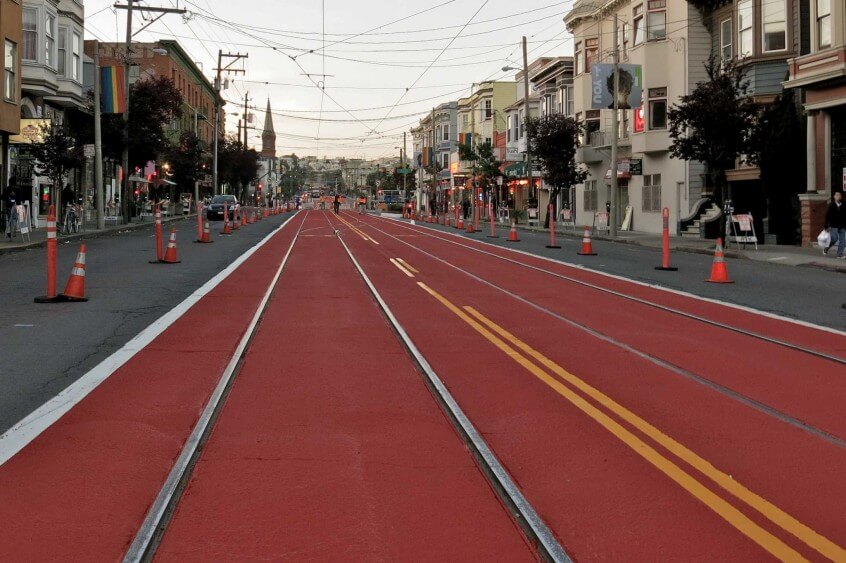San Francisco transit officials are seeking solutions to prevent Muni buses from getting stuck in major traffic jams as more people decide to drive and fewer choose to use public transit.
Transit planners at the San Francisco Municipal Transportation Agency are expecting fewer Muni passengers due to the ongoing Covid-19 pandemic. More drivers on streets cause congestion and can snarl buses in traffic nightmares — transit planners are hoping to avoid that with temporary transit-only lanes.
On Tuesday, the SFMTA Board of Directors will decide whether to designate temporary transit-only lanes for buses and taxis on Laguna Honda Boulevard from Clarendon Avenue to Dewey Boulevard, Mission Street from 11th to First streets, as well parts of Seventh Street, Eighth Street and Masonic Avenue.
Portions of Woodside, Bosworth and Presidio avenues are also under consideration.
Additionally, the board will also decide if the city’s traffic engineer should be granted authority to approve additional temporary transit-only lanes going forward.

If approved, temporary lane designations would be effective for 120 days after expiration of The City’s emergency health order. The board will then decide whether to make those changes permanent.
Adding transit-only lanes will require removal of parking spaces, extension of tow zone hours and the possibility of removing a travel lane for private vehicles — a plan sometimes met with opposition.
SFMTA’s Director of Transportation Jeffrey Tumlin Tuesday urged the agency to move swiftly. He said peak recurrent congestion has already returned at the usual bottleneck areas with just about 15 percent of The City’s economy up and running.
Tumlin added that people will often choose to drive rather than use public transit as a way to protect themselves from contracting the virus.
Dan Howard, the SFMTA’s transportation technology systems manager, said traffic jams could be devastating for Muni service. The agency is only expecting to resume about 70 percent of its scheduled service.
Buses are also currently running with reduced capacity in order to provide space for passengers to spread out.
Howard said:
“That means that it now takes about three buses to the same number of people as one bus did back in January.”
Tweet this!

Officials said reduced traffic since the mid-March resulted in an average travel time savings of 15 percent on Muni bus lines currently running. Those saving could be lost as more drivers return to the road, Howard said.
Some corridors — such as on Seventh and Eighth streets — have experienced up to 35 percent reductions in travel time.
Howard said the combination of traffic congestion and reduction of Muni service and passenger capacity could translate to between 70 and 80 percent overall service loss, which he equated to losing the Golden Gate Bridge, Bay Bridge and the Benicia-Martinez Bridge combined.
The public transit advocacy group San Francisco Transit Riders supports efforts to establish temporary transit-only lanes.
Zack Deutsch-Gross, the organization’s membership manager, said:
“If Muni is still stuck in worsening traffic, it’ll be increasingly inefficient to use, expensive to operate and more punitive to those who don’t have other options.”
Tweet this!
Editor’s note: The SFMTA Board of Directors at its June 30 meeting approved the temporary transit-only lanes and delegation of authority to the city traffic engineer for future temporary lanes.
Jerold serves as a reporter and San Francisco Bureau Chief for SFBay covering transportation and occasionally City Hall and the Mayor's Office in San Francisco. His work on transportation has been recognized by the San Francisco Press Club. Born and raised in San Francisco, he graduated from San Francisco State University with a degree in journalism. Jerold previously wrote for the San Francisco Public Press, a nonprofit, noncommercial news organization. When not reporting, you can find Jerold taking Muni to check out new places to eat in the city.
